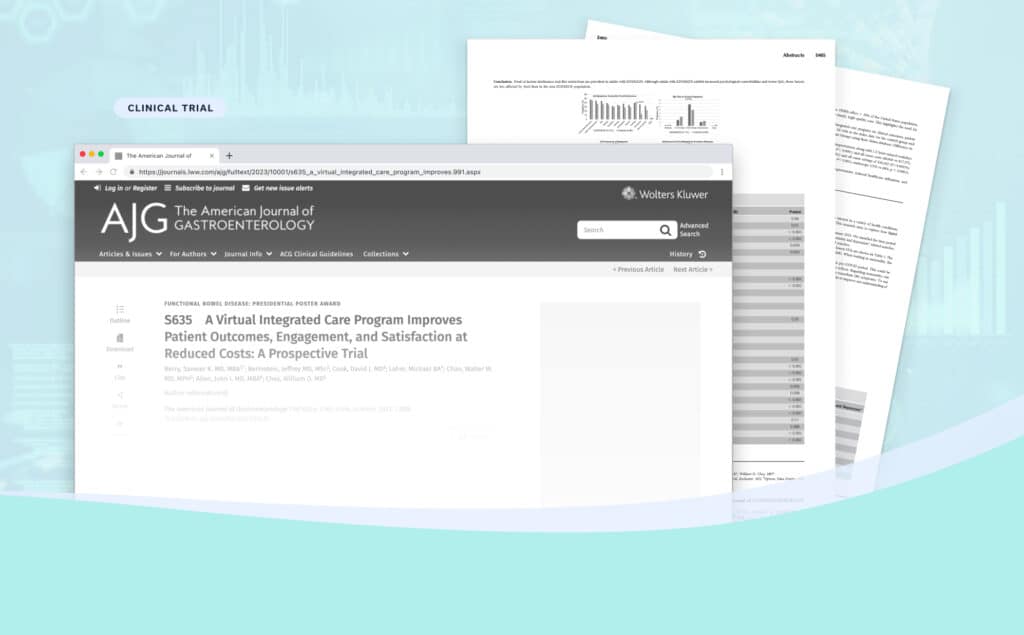Key Takeaway: Labor unions are innovators in health care – often looked to as a transformational force for newer areas of health offerings. Digestive health is the next big addressable opportunity and value-based care options unlock the ability of fund administrators to provide the best possible benefits for their members with proven outcomes while driving cost savings.
Many of the benefits working Americans rely on today were won through the hard work and advocacy of labor unions. As the cost of healthcare continues to rise and the demands on working families grow, unions are once again stepping up to lead. By seeking out innovative health solutions that keep their members healthy, on the job, and financially secure, unions are building on their legacy to protect and support the wellbeing of America’s workforce for generations to come.
“The 40-hour work week, the minimum wage, family leave, health insurance, Social Security, Medicare, retirement plans. The cornerstones of the middle-class security all bear the union label.”
— President Barack Obama in his Labor Day Speech at Laborfest
Diverse Health Care Needs for Union Workers
Research indicates that digestive health significantly impacts our workforce. The National Institute for Health says that 61% of people have experienced a digestive health symptom in the last week. Claims data indicate that upwards of 30% of our workforce already has a GI-related claim–with 15% those escalating to high-cost options. With this data, it’s unsurprising that GI symptoms like abdominal pain are the #1 cause of treat-and-release emergency department visits and that nearly $141 billion is spent on GI in the US annually (a top-4 cost driver for organizations nationwide). On top of medical costs, digestive health is the second leading cause of both missed work and short-term disability claims.
This data is especially poignant within populations like union workers who:
- Have a requisite not to miss work: Union workers are often paid hourly, and their benefit eligibility in the following month may be contingent on working a certain minimum number of hours. Because of this, union workers rarely miss work. Likewise, labor unions are motivated to keep their members working for the members’ sake and to receive the hourly contribution associated with the members’ work.
- Tend to defer care: There’s an old saying that a union worker needs to be dying in a ditch before they go to a doctor. Many union workers wait until their symptoms are excruciating to seek care.
- Are more likely to seek emergency care: Because of their often long and taxing work schedules and their tendency to wait until symptoms are urgent before seeking care, union workers may end up seeking care after-hours, including expensive emergency care options.
- Do demanding work that leads to enhanced symptoms: Many union workers do physically arduous work that requires them to be on their feet all day or carry heavy loads. Painful and unaddressed physical symptoms make it difficult for union workers to do their jobs well.
- Often struggle with mental health: The U.S. Department of Labor has reported increased suicide rates in specific sectors, including the building trades, which are heavily unionized. These mental health struggles are often exacerbated by physical symptoms, making it important for these workers to have access to medical, dietary, and behavioral health professionals working together as a team – often referred to as multidisciplinary care.
- Experience access disparities: Although members of a particular union likely do similar work, they often live in different towns and cities, where access and quality of needed healthcare services can vary drastically.
Innovative Healthcare Benefits for Labor
From their very formation, unions have led the way in seeking innovative solutions for their members. They continue to find and implement health care solutions that meet the unique health care needs of their members while helping the union to keep costs low:
- Focusing on addressable opportunities: Trustees ensure early awareness of problems to prevent burgeoning issues. By addressing trends like the 61% prevalence of GI symptoms or the rising epidemic of suicide among trade workers, union trustees are able to address concerns before they become endemic.
- An emphasis on access: When members struggle with painful symptoms, they likely can’t wait weeks or months for a specialist appointment. Unions look for solutions that give their members quick access to care appointments so that they can feel better quickly.
- Virtual care options: Virtual care is both empowering and convenient for members. By offering virtual options like Oshi Health, members from every city and state are able to get high-quality care without missing work.
- Increased preventative care programs: Some labor unions invest in preventative care programs and cancer screening initiatives designed to keep their workforces healthy and avoid expensive emergency care.
- Introduction of collaborative care models: At Oshi’s multidisciplinary GI clinic, workers can access gastroenterologists, registered dietitians, and even gut-brain therapists to meet all their GI needs in one place. In collaborative care models, collaboration between stakeholders promotes continuity of care, leading to fast and meaningful symptom control.
Benefits Decisions with a Population-Health Focus
Fast, convenient access to Oshi Health is proven to drive 98% satisfaction and save $10,292 in all-cause costs per patient in the first six months
The trustees responsible for making benefit decisions for union health plans have a tough job–they have to balance controlling health care costs for their fund and providing the best possible benefits for their members.
One way they do this is by offering value-based care solutions like Oshi. With Oshi, members can seek help for GI symptoms through our convenient virtual clinic, where appointments are available as soon as the same day . Oshi’s collaborative team of GI-specialized, licensed providers offers comprehensive care to help union workers feel better fast without missing work hours (or days!).
Oshi patients report 50% fewer missed work days
Oshi has demonstrated a 92% reduction in unnecessary (and expensive) imaging and tests, with 81% of patients reporting improved quality of life within 3 months. Additionally, Oshi members are much less likely to seek emergency care– after 6 months, only 8% of enrolled patients had a GI-related ED visit, a 64% reduction compared to the general population. Meaningful symptom relief leads to a more engaged and productive workforce, and reducing high-cost and duplicative services saves union trust funds thousands of dollars each year. Moreover, many union workers already have access to Oshi in-network through their health plan.
Clinically-proven GI care for your members—from almost anywhere
In-network with most major insurance

For the labor unions and their members, this is a big win-win.
“The care I have received at Oshi has been above and beyond my expectations. The app is easy to use and my care team has been nothing but a blessing. Thank you!”
— Oshi Patient from Sheet Metal Local
“This is the first provider I have seen that has actually listened to me and right off the bat wanted to figure out my problem.”
— Oshi Patient from Operating Engineers Local
If you want to learn more about how union health plans can better address cost and care for members, get in touch. We’d be happy to share how you can partner with Oshi to deliver meaningful outcomes for members and cost savings for your plan.





